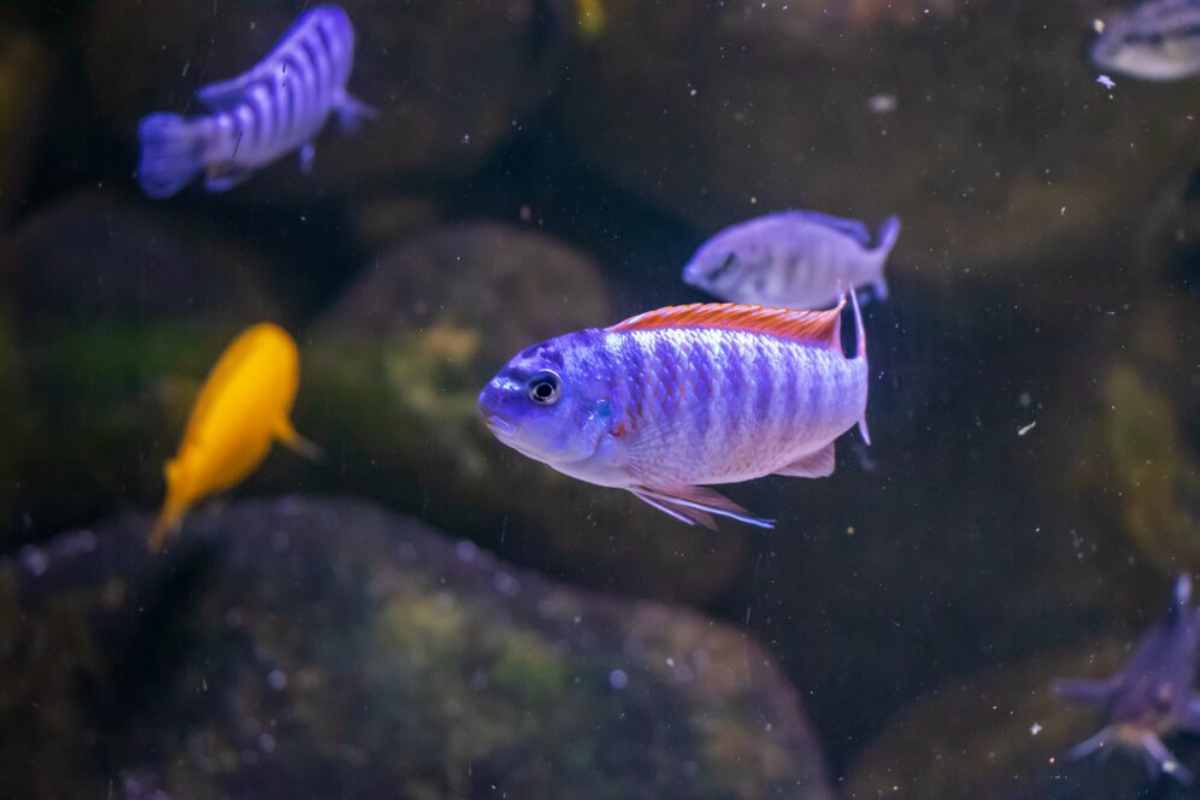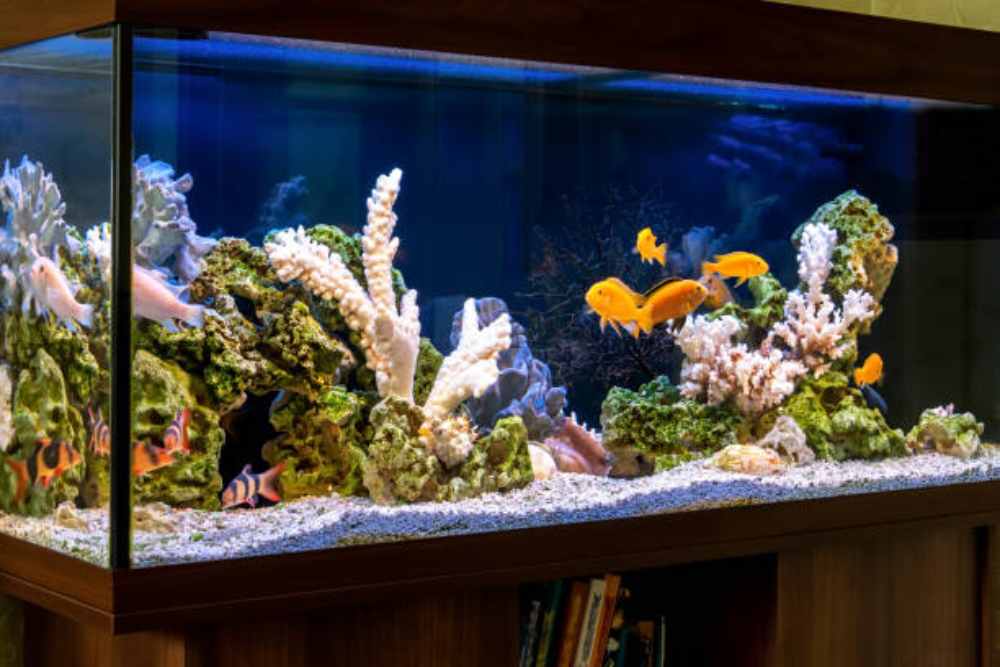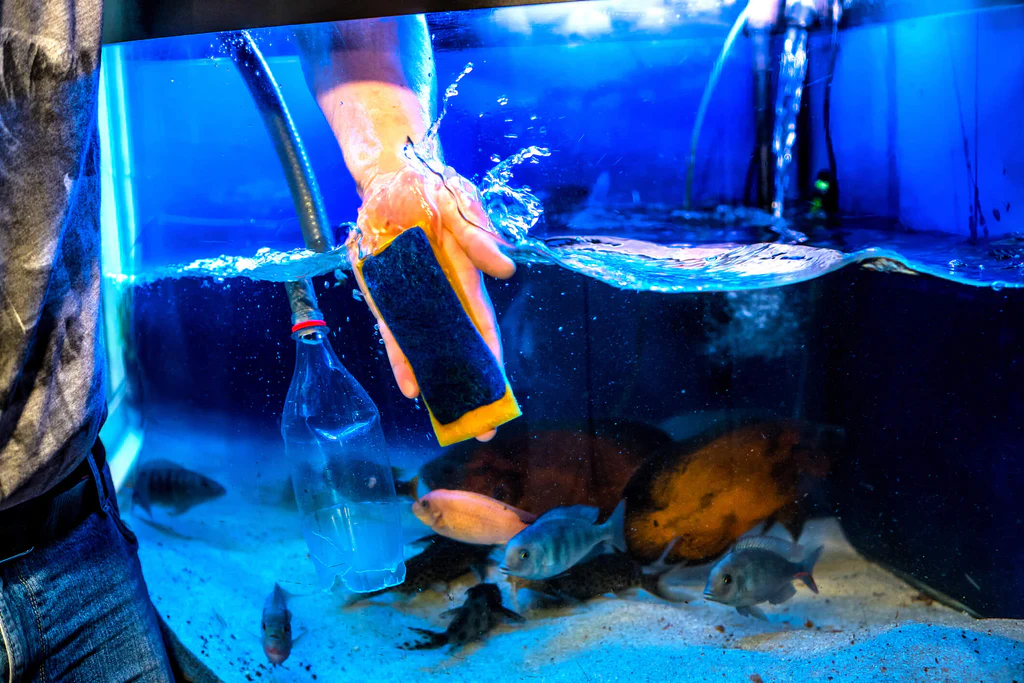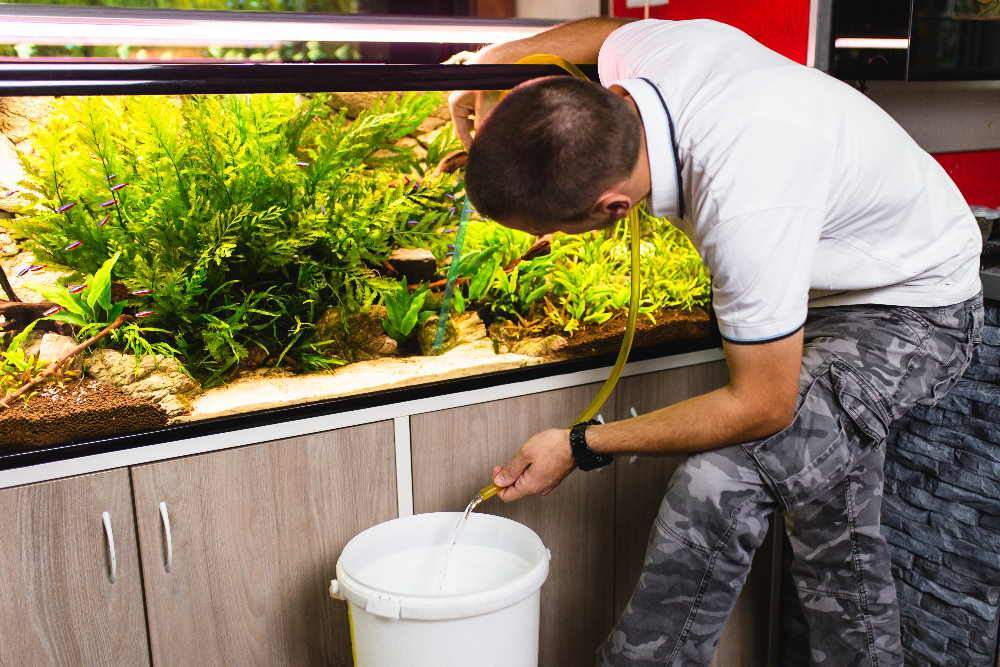
How to Maintain Water Quality for Aquatic Pets: The Ultimate Guide
Keeping water quality high is vital for the health of all aquatic pets, like fish, amphibians, and invertebrates. An aquarium is a miniature ecosystem that requires proper care and attention. Poor water conditions can lead to stress, disease, and even death. This guide gives you the key knowledge and steps to keep your aquatic environment clean and healthy. No matter if you’re a beginner or a seasoned aquarist, these principles are key to a successful underwater world.

Quick Guide
- Test Water Weekly – Regularly check pH, ammonia, nitrite, and nitrate levels to ensure a healthy environment.
- Perform Water Changes – Replace 10-15% of the tank water weekly to remove waste and maintain water quality.
- Use a Proper Filter – Choose the right filter for your tank size and species, and clean it regularly.
- Dechlorinate Tap Water – Always use a dechlorinator before adding tap water to the aquarium.
- Avoid Overfeeding – Feed only as much as your aquatic pets can consume in a few minutes to prevent waste buildup.
- Quarantine New Additions – Keep new fish or amphibians in a separate tank for at least two weeks to prevent disease spread.
- Keep Temperature Steady – Use a heater and thermometer to ensure the water stays at the right temperature for your species.
Why Water Quality Matters
The Importance of Clean Water
Water quality goes beyond mere clarity. It includes factors like pH levels, ammonia, nitrites, nitrates, temperature, and water hardness. Each of these factors directly impacts the well-being of your aquatic pets. Bad water can cause health problems like fin rot, breathing issues, and weak immune systems. This makes fish more likely to get infections.
Real-Life Impacts of Poor Water Quality
Imagine an aquarium that lacks proper maintenance. Organic waste accumulates, leading to increased ammonia levels. This toxic buildup can cause severe stress, damage fish gills, and ultimately lead to fatalities. Keeping good water conditions helps fish look better, act naturally, and breed successfully. This makes your aquarium lively and colorful.
Studies indicate that aquariums with consistently clean water experience significantly fewer disease outbreaks. This leads to healthier fish. It also cuts veterinary costs and replacements. This makes fishkeeping more rewarding.
Pro Tip: Live plants help absorb excess nutrients and improve oxygen levels, making them a natural way to enhance water quality.
Step-by-Step Guide to Maintaining Water Quality
Step 1: Regular Testing and Monitoring
Test Water Parameters Weekly
Routine testing is crucial for identifying water quality issues before they become severe. Use a reliable test kit to monitor:
- pH Levels: Different species thrive at different pH levels, so ensure the pH suits your pets.
- Ammonia: Should always be at zero ppm.
- Nitrites: Toxic to fish, nitrites should also remain at zero ppm.
- Nitrates: Ideally kept below 20 ppm.
Track these parameters each week. This way, you can spot imbalances early and fix them quickly.
Adjust Parameters as Needed
If test results show deviations, take action accordingly. High ammonia levels, for example, require immediate water changes and possibly improved filtration. A pH imbalance can be corrected using pH stabilisers suited to your specific species’ needs.
Step 2: Choosing the Best Water Filtration System
Select the Right Filter Type
A reliable filtration system is the backbone of a healthy aquarium. There are several types to consider:
- Canister Filters: Ideal for larger tanks, offering superior filtration and customisation.
- Hang-on-Back (HOB) Filters: Suitable for medium-sized aquariums; easy to maintain.
- Sponge Filters: Excellent for small tanks and breeding setups.
- Internal Filters: Compact and efficient for smaller aquariums.
Maintain and Clean Filters Regularly
A filter is only as good as its maintenance. Cleaning the filter media every four to six weeks prevents clogging and ensures effective filtration. When cleaning biological media, rinse it in aquarium water rather than tap water to preserve beneficial bacteria.
Step 3: Ensuring Clean Water for Fish and Amphibians
Perform Regular Water Changes
Water changes are important. They help remove waste, add necessary minerals, and stop harmful chemicals from building up. A general rule is to replace 10-15% of the water weekly. Regular water changes keep water parameters stable. This reduces stress for aquatic life.
Use Dechlorinators and Water Conditioners
Tap water contains chlorine and chloramines, both harmful to aquatic pets. Always use a dechlorinator before adding fresh water. Some water conditioners also neutralise ammonia and nitrites, offering additional protection.
Important: Skipping maintenance can cause dangerous ammonia spikes. This can stress or even kill your aquatic pets. Always stay consistent with testing and cleaning.

Expert Tips and Common Mistakes to Avoid
Best Practices Beyond the Basics
- Quarantine New Additions: Before introducing new fish, keep them in a separate tank for at least two weeks. This precaution helps prevent disease transmission.
- Incorporate Live Plants: Live plants absorb nitrates, provide oxygen, and improve water quality naturally.
- Use a Siphon for Cleaning: A gravel vacuum helps remove uneaten food and waste from the substrate, keeping the environment clean.
Common Mistakes and Their Impact
- Overfeeding: Uneaten food decomposes, increasing ammonia levels. Feed only what your fish can consume in a few minutes.
- Ignoring Filter Maintenance: A clogged or dirty filter reduces water circulation and can deteriorate water conditions.
- Skipping Water Changes: Neglecting water changes leads to waste accumulation, making the environment toxic for aquatic life.
Advanced Insights and Expert Recommendations
Understanding the Nitrogen Cycle
The nitrogen cycle is fundamental to a healthy aquarium. Good bacteria change ammonia from waste into nitrites, then into safer nitrates. Ensuring your tank is properly cycled before adding fish is essential for long-term stability.
Automation for Consistency
Automated feeders, dosing pumps, and water change systems make it easier to care for your aquarium. These tools help keep feeding schedules regular and water conditions stable. They are especially helpful for busy people.
The Role of UV Sterilisers
UV sterilisers use ultraviolet light to eliminate harmful bacteria, algae spores, and parasites. While not essential, they add an extra layer of protection for fish health.
Temperature Stability
Sudden temperature fluctuations stress aquatic pets. Use a reliable heater and thermometer to maintain a stable environment. For tropical fish, temperatures typically range between 24-26°C.
Frequently Asked Questions (FAQ)
How often should I test my aquarium water?
You should test your water at least once a week to monitor pH, ammonia, nitrite, and nitrate levels. More frequent testing is recommended if you notice unusual behaviour in your fish or amphibians.
How much water should I change, and how often?
Perform a 10-15% water change weekly. For heavily stocked tanks, you may need to change 20% or more to maintain optimal water conditions.
Why is my water cloudy even after a water change?
Cloudy water can result from overfeeding, bacterial blooms, or poor filtration. Ensure your filter is functioning properly, and avoid overfeeding your pets.
Can I use tap water for my aquarium?
Yes, but you must treat it with a de-chlorinator to remove harmful chlorine and chloramines before adding it to your tank.
How do I reduce ammonia levels in my tank?
- Change the water regularly.
- Don’t overfeed.
- Make sure the filtration works well.
- Think about adding beneficial bacteria to help the nitrogen cycle.
What is the nitrogen cycle, and why is it important?
The nitrogen cycle turns toxic ammonia into nitrite and then into safer nitrate. This process relies on helpful bacteria. A stable cycle ensures a healthy environment for aquatic pets.
How can I prevent algae growth in my tank?
To limit excess nutrients:
- Avoid overfeeding.
- Maintain a good filtration system.
- Use live plants.
- Control light exposure to stop excessive algae growth.
How do I properly clean my aquarium filter?
Rinse the mechanical filter media in tank water when changing water. This helps remove debris and keeps beneficial bacteria alive. Replace chemical media, like activated carbon, as needed.
Should I quarantine new fish before adding them to my main tank?
Yes, quarantining new fish for at least two weeks helps prevent the spread of disease and parasites to your existing aquatic pets.
How can I keep my aquarium water temperature stable?
Use a reliable heater, and place the tank away from direct sunlight or air vents. Monitor the temperature regularly with a thermometer to prevent sudden fluctuations.

Keep Your Aquatic Pets Healthy with Clean Water
Maintaining pristine water quality requires effort, knowledge, and the right equipment. By following this guide, you can create a healthy, pollutant-free environment for your fish and amphibians. The key to success lies in regular monitoring, effective filtration, and consistent maintenance.
Take action today—test your water parameters, inspect your filtration system, and schedule your next water change. Your fish will reward you with vibrant colours, energetic behaviour, and a longer, healthier life.
With these best practices in place, you are well on your way to mastering aquatic pet care and creating a stunning, thriving aquarium. Happy fishkeeping!


